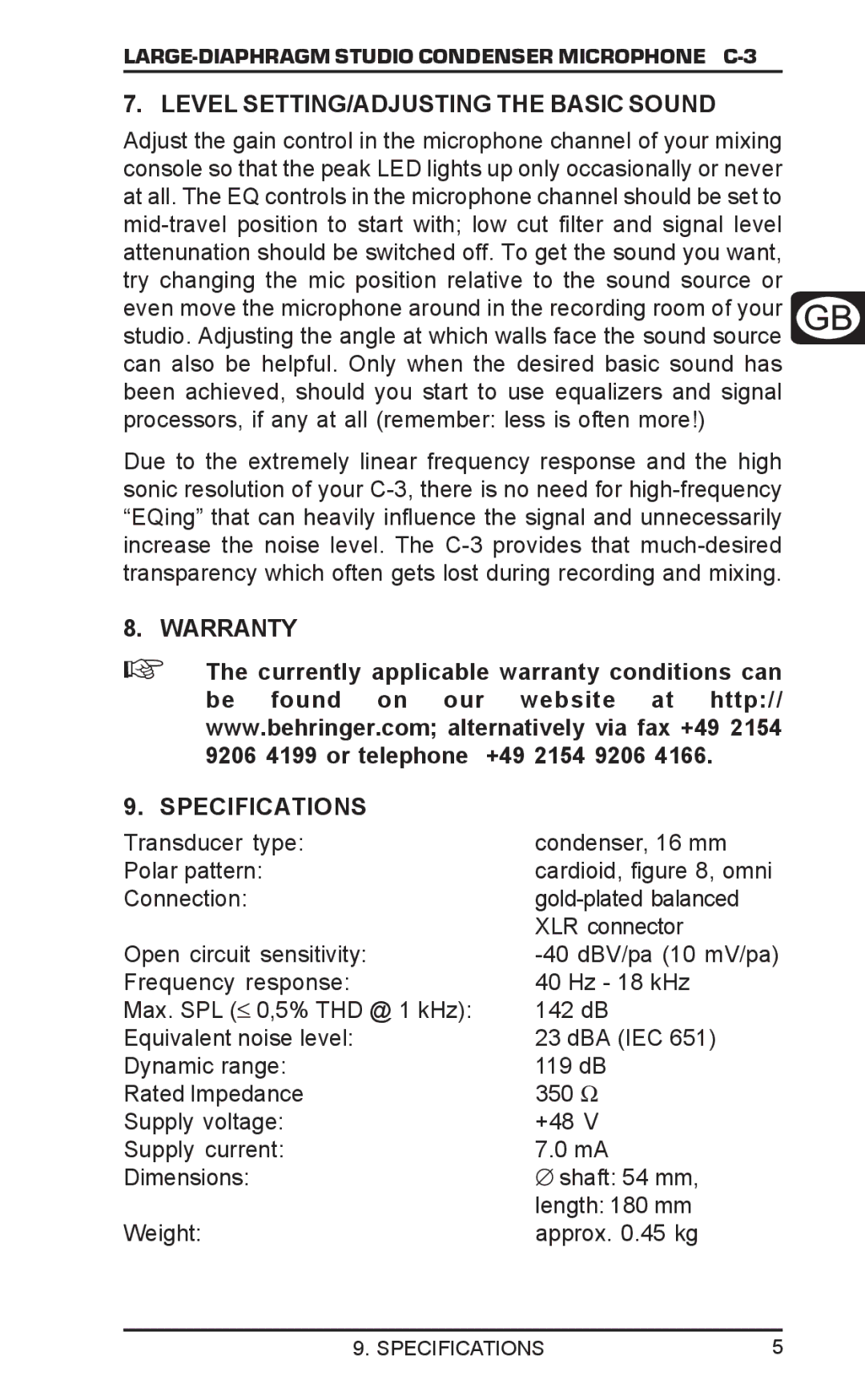
7. LEVEL SETTING/ADJUSTING THE BASIC SOUND
Adjust the gain control in the microphone channel of your mixing console so that the peak LED lights up only occasionally or never at all. The EQ controls in the microphone channel should be set to
Due to the extremely linear frequency response and the high sonic resolution of your
8. WARRANTY
The currently applicable warranty conditions can be found on our website at http:// www.behringer.com; alternatively via fax +49 2154 9206 4199 or telephone +49 2154 9206 4166.
9. SPECIFICATIONS
Transducer type: | condenser, 16 mm |
Polar pattern: | cardioid, figure 8, omni |
Connection: | |
| XLR connector |
Open circuit sensitivity: | |
Frequency response: | 40 Hz - 18 kHz |
Max. SPL (< 0,5% THD @ 1 kHz): | 142 dB |
Equivalent noise level: | 23 dBA (IEC 651) |
Dynamic range: | 119 dB |
Rated Impedance | 350 Ω |
Supply voltage: | +48 V |
Supply current: | 7.0 mA |
Dimensions: | ∅ shaft: 54 mm, |
| length: 180 mm |
Weight: | approx. 0.45 kg |
9. SPECIFICATIONS | 5 |
